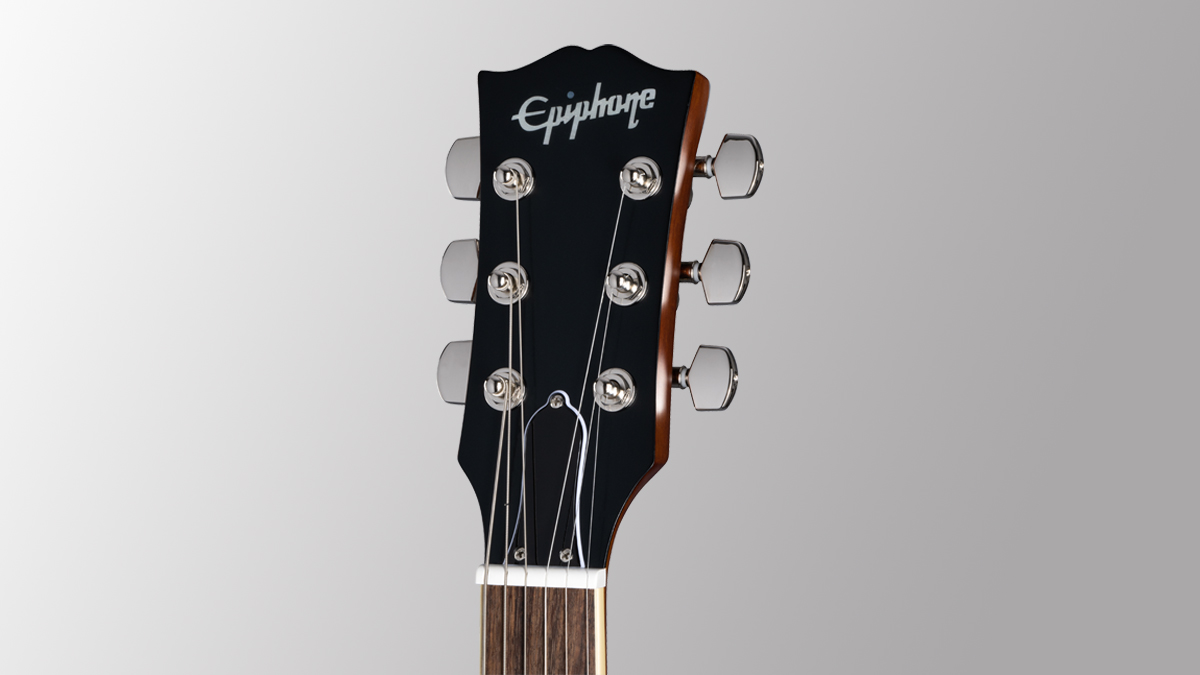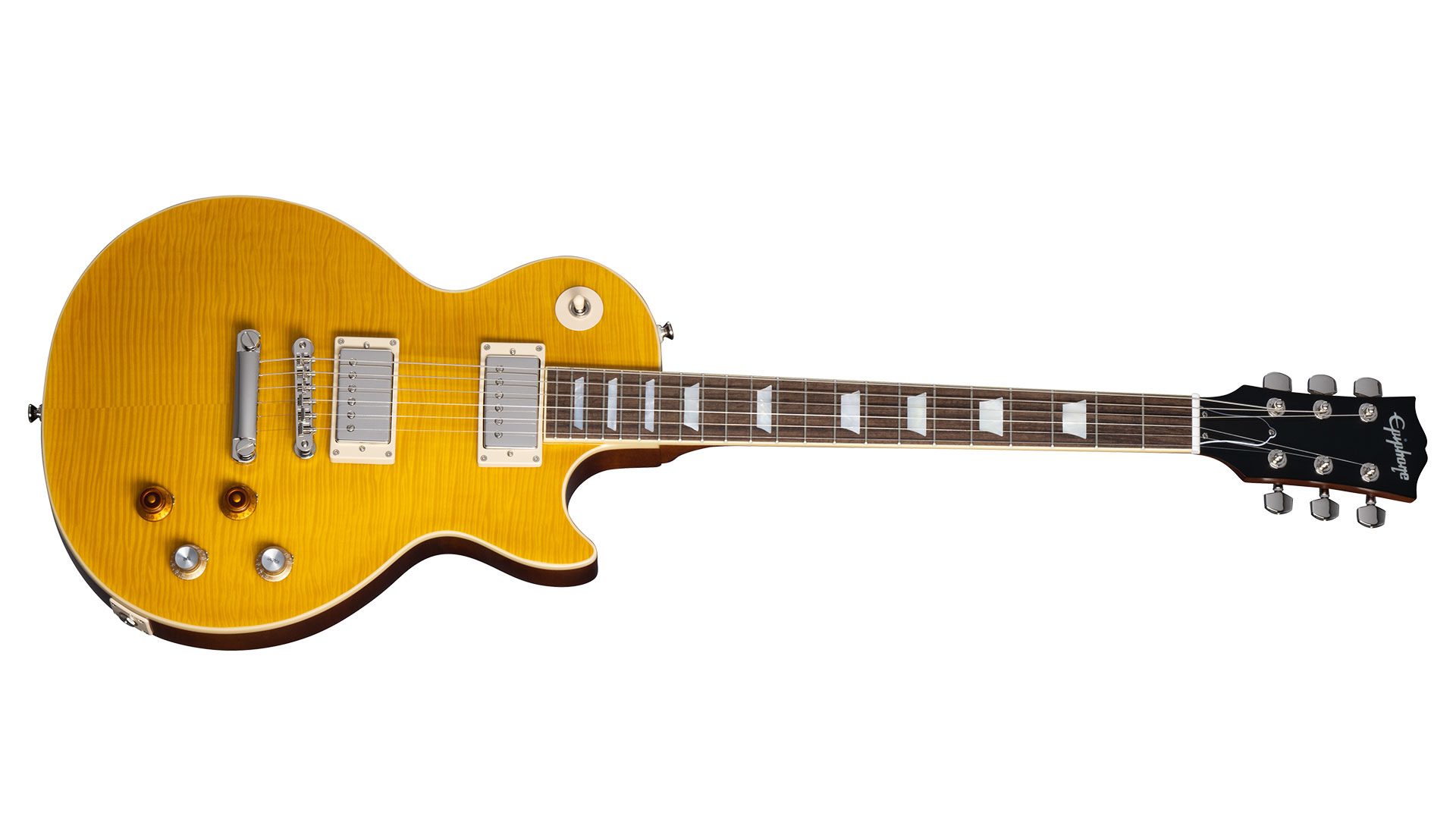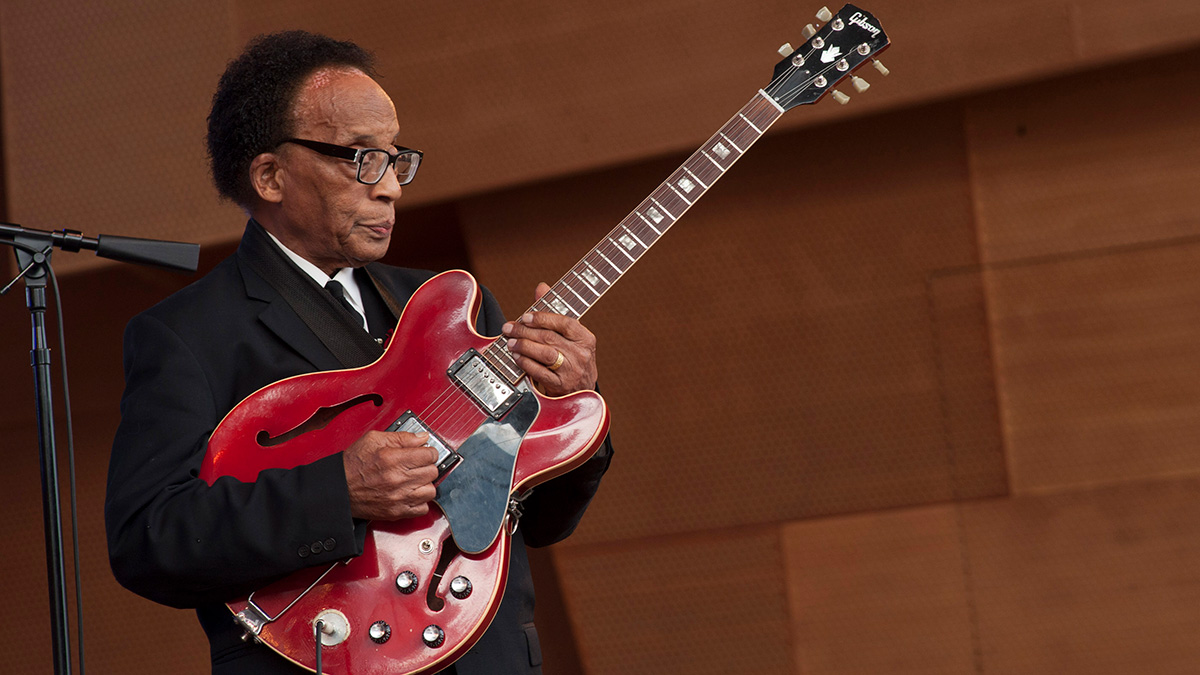“Our Epiphone and Gibson Custom Shop teams are continually collaborating”: Gibson’s Mat Koehler confirms open-book headstock will roll out on more Epiphone models
The much-talked about Gibson-aping headstock will feature on the brand’s new top-tier Inspired by Gibson Custom Shop builds

The Epiphone Kirk Hammett ‘Greeny’ 1959 Les Paul Standard model arrived yesterday to much fanfare, with the headline feature being the return of the Gibson’s open-book headstock shape to the Epiphone range.
The shape saw some use in the late-’90s and early-’00s, but has not featured on any new Epiphone builds since Gibson’s 2018 takeover and, as such, became exclusive to Gibson Les Pauls.
Since that point, players have debated over the reasons for the move, considering it either a strategy to honor Epiphone’s own long heritage, or a business decision designed to better demarcate the brands and encourage more players to pick up the USA-made Gibson builds.
The answer is likely a bit of both, but suffice to say, guitarists have long hoped for the return of the shape on Epiphone’s Gibson-inspired builds.
It was good news then, when the recently announced Greeny Les Paul broke that particular seal: hailing the first post-2018 Epiphone electric guitar to feature a Gibson open-book headstock.
However, alongside the arrival of the new top-of-the-line Epiphone Les Paul, buried in the press release, came some more universal news: that open-book headstock will not be limited to the Greeny.
“Our Epiphone and Gibson Custom Shop teams are continually collaborating and elevating materials and ideas,” says Gibson Brands VP of Product, Mat Koehler.
Get The Pick Newsletter
All the latest guitar news, interviews, lessons, reviews, deals and more, direct to your inbox!
“And our forthcoming Inspired by Gibson Custom Shop-level Epiphone models will also feature the open-book Gibson headstock shape.”

What does this mean? Well, essentially, Epiphone’s regular Les Paul builds will still come with the firm’s own curvier headstock – inspired by Epiphone’s late-’50s Kalamazoo-era design.
However, the brand’s forthcoming top-tier builds – the ‘Inspired by Gibson Custom Shop’ line – will now feature the open-book design.
In other words: you can have a Gibson headstock, but you will have to pay for it.
At $1,499, the Chinese-made Greeny is now the most expensive Epiphone Les Paul and it would be foolish not to expect similarly premium prices on the firm’s future ‘Inspired by Gibson Custom Shop’ builds.
As such, it represents something of a mixed victory for Epiphone buyers. For those simply seeking the Gibson name, they can spend $100 more and get a foot on the ladder with a US-made Les Paul Junior.

However, anyone after a full Gibson-style build on a budget can now decide between spending near-Gibson money, or opting for the Epiphone headstock.
It’s another characteristically canny business move from the modern-era Gibson management, but we think they’ll have no problem finding homes.
And, while it’s not exactly what Epiphone fans were hoping for (ie, a rollout of the design as standard on Gibson-like builds), it does mean more price points covered and more options for the guitar buying public – and that is, ultimately, still a good thing.
For more information on the Greeny Les Paul, head to Epiphone.
UPDATE 11/22: This article was amended to reflect the fact that the the open-book headstock was not in general use on Epiphone builds pre-2018.

Matt is Deputy Editor for GuitarWorld.com. Before that he spent 10 years as a freelance music journalist, interviewing artists for the likes of Total Guitar, Guitarist, Guitar World, MusicRadar, NME.com, DJ Mag and Electronic Sound. In 2020, he launched CreativeMoney.co.uk, which aims to share the ideas that make creative lifestyles more sustainable. He plays guitar, but should not be allowed near your delay pedals.
“Wins out on battery life, stealthy aesthetics and its well-judged Cable Tone feature”: Blackstar Airwire i58 review
“A distinctive brightness that no other strings have been able to capture”: How Rotosound revolutionized the bass world with its Swing Bass 66 strings – and shaped the sound of rock music in the process










